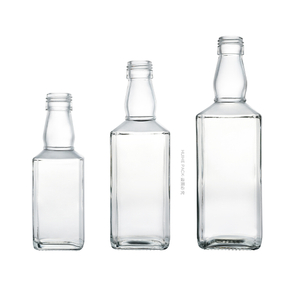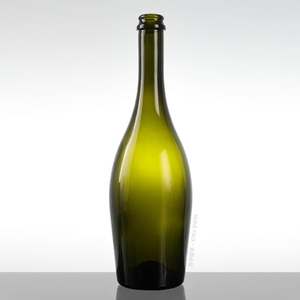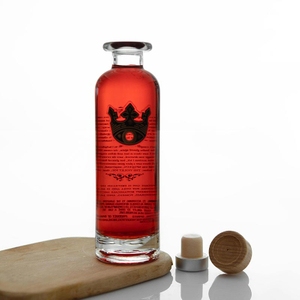Customized | Quality Control | Case | Blogs | Download | FAQ
Views: 0 Author: Site Editor Publish Time: 2025-10-24 Origin: Site
Ever wondered why champagne bottles come in so many different sizes and carry those unique names? It's not random—these choices tie back to three key things: long-standing tradition, celebration culture, and practical winemaking needs.
Let's start with tradition. Many champagne bottle names (think Methuselah or Jeroboam) trace back to biblical figures, a nod to the region's centuries-old winemaking heritage. Then there's celebration culture: a small Split (187ml) works perfectly for single servings in hotels or gift sets, while a large Magnum (1.5L) becomes the centerpiece at weddings or corporate parties.
Champagne bottle sizes aren't just about aesthetics. The size of the bottle can influence how well the wine ages, how long it keeps its bubbles, and even how it represents your brand. Larger bottles often preserve the delicate flavors and carbonation better, making them a favorite for collectors and luxury brands. Smaller bottles, on the other hand, are perfect for sampling, gifting, or single servings at events.
If you're a winemaker, distributor, or brand looking to stand out, understanding champagne bottle sizes can help you choose packaging that reflects your product's quality and personality — and that's exactly what we'll explore in this guide.
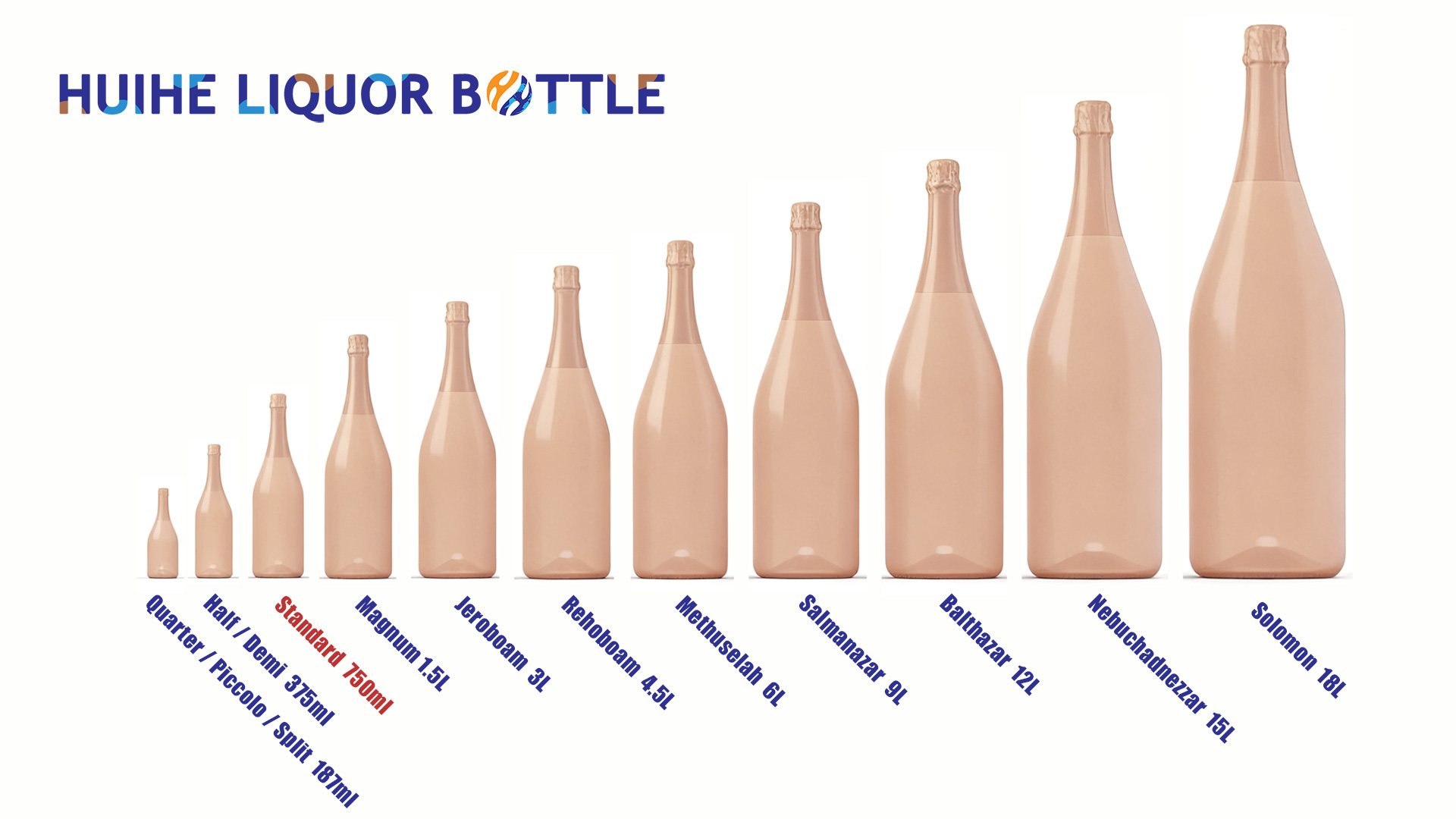
Champagne bottles come in a wide range of sizes — from mini bottles made for single servings to massive showpieces that can pour enough for a whole wedding. Each size has its own name, history, and purpose. Most of these names come from biblical kings and figures, reflecting luxury and tradition in champagne culture.
Below is a complete Champagne Bottle Size Chart, covering both standard and rare formats. This guide helps you quickly understand how each size compares to the classic 750 ml bottle and what it’s commonly used for.
Bottle Name | Capacity (ml / L) | Equivalent to Standard Bottles (750 ml) | Origin or Note | Common Use |
Quarter / Piccolo / Split | 187 ml | ¼ bottle | "Piccolo" means "small" in Italian | Single servings, party favors |
Half / Demi | 375 ml | ½ bottle | French "demi" means "half" | Hotels, sample packs |
Standard | 750 ml | 1 bottle | – | The universal retail size |
Magnum | 1.5 L | 2 bottles | Latin for "great" | Ideal for aging and gifting |
Jeroboam | 3 L | 4 bottles | Named after a biblical king of Israel | Large celebrations, premium releases |
Rehoboam | 4.5 L | 6 bottles | Biblical king of Judah | Special editions, large events |
Methuselah | 6 L | 8 bottles | Named after the oldest man in the Bible | Luxury collections, long aging |
Salmanazar | 9 L | 12 bottles | Biblical Assyrian ruler | Banquets and corporate gifting |
Balthazar | 12 L | 16 bottles | Biblical Babylonian king | Display bottles, grand celebrations |
Nebuchadnezzar | 15 L | 20 bottles | Famous Babylonian ruler | Ultra-premium displays, champagne towers |
Solomon | 18 L | 24 bottles | Biblical King Solomon, symbol of wisdom | Rare collector's bottle, special showcases |
Larger bottles like the Jeroboam, Methuselah, or Nebuchadnezzar are not just impressive to look at — they also affect how champagne matures. The slower oxidation inside big bottles often results in smoother flavors and finer bubbles. Meanwhile, smaller bottles like the Split or Half are great for sampling, convenience, or on-the-go enjoyment.
Tip: If you're choosing champagne bottles for your brand, size can be part of your storytelling. Whether you want something elegant for gifting or bold for special releases, selecting the right bottle size helps your champagne stand out on the shelf and in every celebration.
One of the most fascinating things about champagne bottles is their names. Beyond the Standard and Magnum, many larger sizes — like Jeroboam, Methuselah, and Nebuchadnezzar — are named after biblical kings and patriarchs. This tradition dates back to 18th-century France, where champagne houses began using these grand names to highlight prestige, history, and craftsmanship.
Each name carries a touch of legend:
Jeroboam was the first king of Israel, known for his boldness — fitting for the first "large-format" champagne bottle.
Methuselah, the oldest man in the Bible, represents longevity and aging — just like champagne that matures beautifully in big bottles.
Salmanazar, named after an Assyrian ruler. It signifies victory and royal authority — ideal for large celebrations.
Balthazar, one of the Three Wise Men who brought gifts to baby Jesus. The name evokes luxury, wisdom, and generosity.
Nebuchadnezzar, the Babylonian king, symbolizes power and grandeur — perfect for bottles made to impress.
Solomon, the wise and wealthy King Solomon. This rare format stands for wisdom, prestige, and ultimate sophistication.
In French champagne culture, these biblical references reflect respect for heritage, ritual, and celebration. The grander the bottle, the more it embodies abundance and ceremony, making large-format bottles popular for weddings, anniversaries, and major toasts.
Did You Know?
Only bottles up to Jeroboam (3L) are used for true secondary fermentation — the process that creates champagne's fine bubbles. Larger bottles are usually filled from smaller batches after fermentation to maintain balance and consistency.
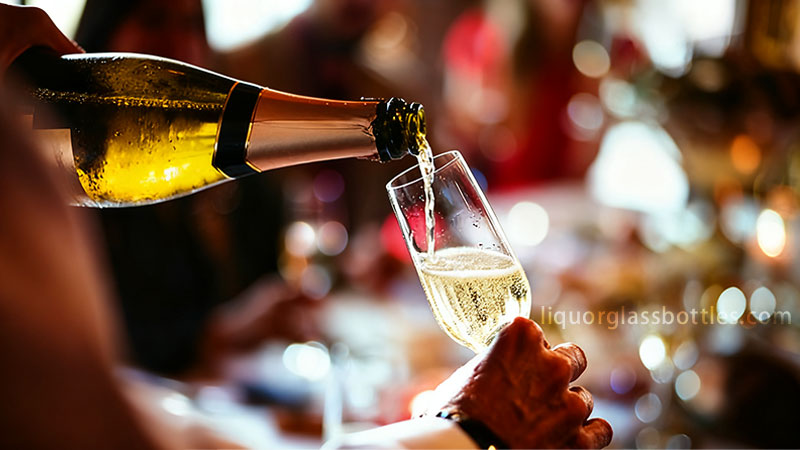
Champagne isn't just about bubbles — it's about balance, aging, and presentation. And believe it or not, bottle size plays a big role in how champagne tastes, smells, and even feels.
Larger bottles, such as the Magnum (1.5L) or Jeroboam (3L), are often considered the best for quality. That's because oxidation happens more slowly in bigger bottles — there's less air relative to the amount of wine. This slower aging process helps preserve the delicate aromas and creates finer, longer-lasting bubbles. Many sommeliers and collectors say champagne in large bottles tastes smoother and more complex.
Smaller bottles, like the Piccolo (187 ml) or Half (375 ml), are more practical. They chill faster, travel easily, and are great for sampling or single servings. However, because they have more contact with oxygen per volume, the champagne inside may age a little faster than in larger formats.
Beyond size, the quality of the glass bottle itself also matters. Champagne bottles must withstand high internal pressure — up to 6 bars (almost three times a car tire's pressure!). That's why Huihe Packaging designs thick-wall, pressure-tested champagne bottles made for durability, safety, and long-term freshness. Our glass not only protects the wine's sparkle but also adds a touch of elegance that elevates your brand's image.
Whether you're creating a premium vintage or a modern sparkling line, choosing the right champagne bottle size and strength ensures that every pop delivers perfection.
From the elegant 187 ml Piccolo to the majestic 18L Solomon, every champagne bottle size tells a story — one of craftsmanship, celebration, and brand identity. The size you choose affects not only presentation but also aging, carbonation, and overall flavor quality.
Whether you're a winemaker, sparkling wine producer, or packaging distributor, understanding these sizes helps you create the right impression for your market. At Huihe Packaging, we provide a full range of champagne and sparkling wine bottles, crafted with thick, pressure-resistant glass to ensure durability, clarity, and premium appearance.
From small samples to luxury showcases, we're here to help you design champagne packaging that reflects your brand's story — in every bottle size.
1. How many liters are in a Magnum of Champagne?
A Magnum holds 1.5 liters, equal to two standard 750 ml bottles. It's one of the most popular large formats for aging and gifting.
2. What is the largest champagne bottle called?
The largest commonly known bottle is the Nebuchadnezzar, which holds 15 liters, equal to 20 standard bottles. Even larger formats like Solomon (18L) exist but are extremely rare.
3. Why do larger champagne bottles taste better?
Bigger bottles age more slowly because of a smaller oxygen-to-wine ratio. This means finer bubbles, smoother texture, and more balanced flavors over time.
4. Do small champagne bottles lose bubbles faster?
Yes, smaller bottles like Splits or Halves have more oxygen exposure, so the carbonation and aroma may fade faster than in larger bottles.
5. What is the best size for aging champagne?
Experts often recommend the Magnum (1.5L) because it balances ideal pressure, oxidation, and aging conditions — offering the perfect mix of quality and convenience.
6. Where can I buy champagne bottles in bulk?
You can find wholesale champagne bottles directly from Huihe Packaging. We supply pressure-tested, customizable glass bottles in various sizes, colors, and finishes for global B2B buyers.




